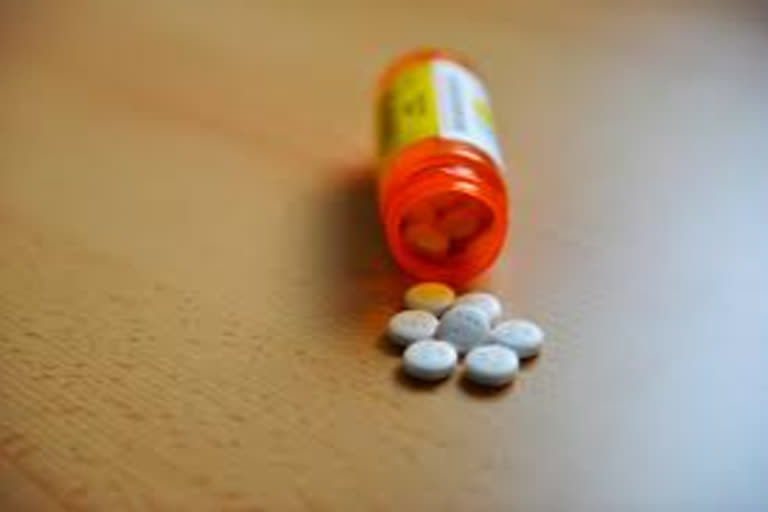New Delhi: The latest study titled 'Medicines in India: Accessibility, Affordability and Quality' claims that three to four per cent of drugs produced in the country are found to be Falsified and Substandard (FS).
“The level of FS drugs is especially high when sourced from government outlets as against retail outlets. Northeastern states are outliers when it comes to low-quality drugs. The proportion of subquality drugs found from both retail outlets and government sources in Northeastern states is very high when compared to the national average,” said the study compiled by Brookings India, an independent research organisation.
Substandard drugs originate from manufacturing sites that may lie outside a state legislative boundary. Data analysis from six states revealed that drugs manufactured in Himachal Pradesh and Uttarakhand are of low-quality.
States are powerless when it comes to de-licensing firms that produce bad quality medicines but lie outside the state boundary. Almost all states face an acute shortage of drug inspectors required for drug-testing and inspections, the study was done by Prof Shamika Ravi, Prachi Singh and David Dam has revealed.
The study further found that multiple firms are responsible for notifications regarding spurious drugs. “The problem of low-quality drugs is not because of a handful of manufacturing firms, multiple firms routinely flout the norms. Price control has been chosen as the policy instrument to keep costs of drugs low in the country,” it said.
India was a top-ten exporter of pharmaceuticals based on sales alone in 2015, an impressive feat given the country mostly exports generic medicines, which are much cheaper than branded, patent-protected ones. However, increased scrutiny over the quality of India’s pharmaceutical exports has accompanied this growth in recent years.
In 2015, 27 different drug companies operating 39 drug manufacturing facilities lost their clearances to make medicines for U.S. consumers. Two years prior, India’s once largest drug company paid $500 million in fines for quality failures.
A national-level survey done in 2014-16 by CDSCO and National Institute of Biologicals (NIB) has put the proportion of FS drugs to be 3.18 per cent. However, subsample analysis for samples drawn from government sources and retail outlets shows that, on average, one in 10 drugs sampled from government sources was found to be Not of Standard Quality (NSQ); the corresponding figure for retail outlets is much lower at 0.3 in 10 drugs.
The NSQ percentage for various states varies from 0 to 8.82 per cent for drugs sourced from retail outlets (except Lakshwadeep at 16.67 per cent). In subsamples from both government sources and retail outlets, the Northeastern states (especially Meghalaya, Manipur, Nagaland, Sikkim, and Mizoram) exhibit a distinct pattern: a high proportion of drugs which are found to be NSQ, far above the national average.
“An independent study looked at drugs made in India which were sold to low and middle-income countries with less-developed regulatory oversight structures in place. They found that over 10 per cent of these drug samples failed a basic test for active pharmaceutical ingredients, suggesting that on a global scale, more substandard drugs (made in India) were sold in these countries,” the study said.
The Drug Price Control Order (DPCO) of 2013 has put 347 drugs on the National List of Essential Medicines (2011) under price control. The numbers of drugs that fall under price regulation have increased under all therapeutic classes.
“The disease burden of the country has shifted away from communicable to non-communicable diseases. The latest DPCO has witnessed an increase in drugs put under regulation from key therapeutic classes which include cardiovascular, alimentary tract, and metabolism (related to diabetes) and respiratory therapeutic class,” the study found.
Also read: Community transmission of COVID-19 in Delhi, waiting for Centre to declare: Satyendar Jain
Interestingly, the World Health Organisation’s (WHO) data on global health expenditures has revealed that when it comes to out-of-pocket expenditure as a proportion of current health expenditure, India records 65 per cent out of the pocket expenditure (OOPE) in comparison to the world average of around 20 per cent.
The state-level scenario is not very different from the national picture which reveals that the burden of health expenses falls mostly on households. In the state of Bihar, out-of-pocket expenses are a whopping 80 per cent of the total health expenditure.
In Uttar Pradesh, India’s most populous state, OOPE forms three-fourth of the total health expenditure. Some states do relatively better, such as Karnataka, Himachal Pradesh, and Gujarat, but even in these states, households bear almost half of the total health expenditure as OOPE.



